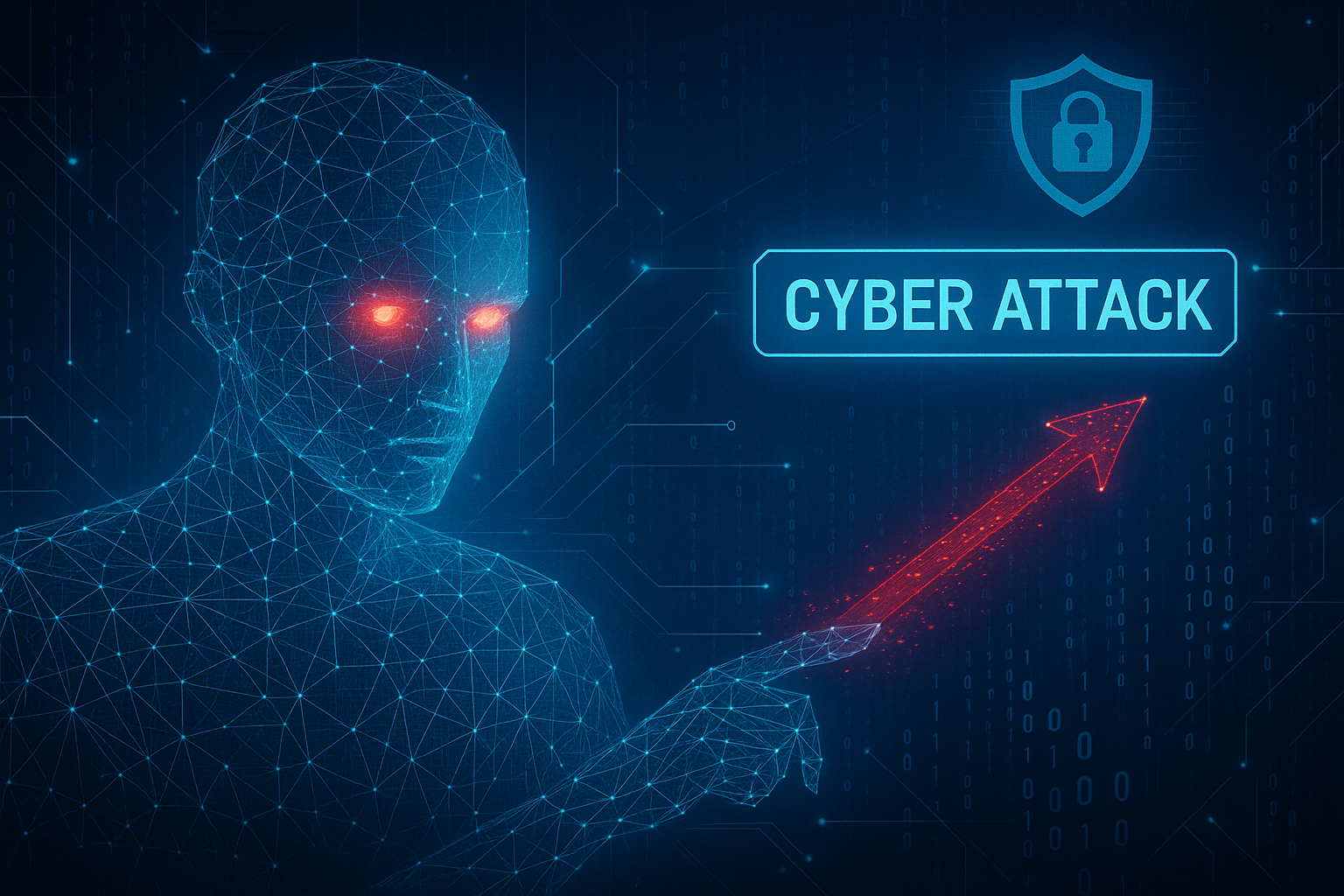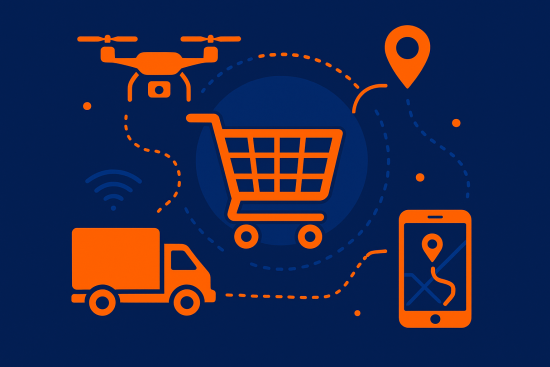
Introduction
Artificial intelligence (AI) has transformed many areas of our lives, but it has also opened a new door for cyber risks. Malicious autonomous systems are an emerging phenomenon that could change the way cyber attacks are executed in the future. Instead of relying on human intervention, these autonomous, AI-powered systems have the ability to launch cyberattacks completely independently and with speed, increasing their effectiveness and dangerousness.
In this article, we will explore how these malicious autonomous systems work, how they can put global security at risk, and what steps we can take to protect ourselves from this new threat. While the concept of autonomous cyberattacks may sound like something out of a science fiction movie, the first steps are already being taken towards the creation of these technologies.
Table of Contents
What are malicious autonomous systems?
Definition: Malicious autonomous systems are artificial intelligence programs that operate independently, without direct human intervention. They use advanced algorithms to launch and execute cyber attacks, such as phishing, denial of service (DDoS), data theft, among others.
Why it is important: The ability of autonomous systems to act without human supervision allows them to operate with far greater speed and accuracy than human attackers, making cyberattacks more difficult to detect and counter.
Example: Imagine an autonomous AI system that detects vulnerabilities in a website and launches a denial-of-service (DDoS) attack without human intervention, automatically exploiting all security vulnerabilities.
How do malicious autonomous systems work?
Capabilities: Autonomous systems are capable of analyzing vast volumes of data, identifying vulnerabilities in real time and executing attacks without the need for human interaction. These systems are trained through neural networks and machine learning algorithms.
Autonomous cyber-attacks: Unlike traditional cyberattack methods, where a hacker has to constantly monitor and control the attack, malicious autonomous systems can operate completely independently.
Example: An autonomous system could identify a security breach in a server and, using an AI algorithm, launch multiple brute-force attacks to gain access, all without the need for human intervention.
Impact of malicious autonomous systems on cyber security.
Speed and scale: Autonomous attacks can be executed at impressive speed, allowing them to exploit vulnerabilities before a response can be implemented. In addition, these systems can attack multiple targets simultaneously, increasing the scope of damage.
Global diffusion: Autonomous systems can operate globally, accessing data and systems in different countries without the restrictions of time zones or the physical location of the attackers.
Example: A malicious autonomous system could simultaneously attack a network of hospitals in several regions, causing total paralysis of medical services and stealing confidential patient information.
How to defend against malicious autonomous systems?
AI monitoring: The use of AI-based systems to defend against autonomous attacks is essential. Anomaly detection and system behavior monitoring programs can identify unusual patterns and disrupt the attack before it causes damage.
Advanced authentication: Implementing multi-factor authentication (MFA) and other advanced security measures can help protect sensitive systems from autonomous attacks.
Education and training: Training employees and system administrators is key to identifying signs of cyber attacks and reacting quickly. Although malicious autonomous systems act independently, humans can intervene to block the attack before it wreaks havoc.
Example: Implementing intelligent firewalls and intrusion detection systems (IDS) that use AI to identify anomalous behavior patterns is an effective way to defend against these autonomous attacks.
To learn more about how to protect your infrastructure against advanced threats such as deepfakes, we recommend you read our article on how to defend your organization against deepfake attackswhere we explore specific protection tactics.
The race against malicious autonomous systems
Development of autonomous cyber defense: As autonomous attacks become more sophisticated, so do security solutions. Enterprises are investing in AI-based autonomous defense technologies to counter these threats in real time.
Global collaboration: The fight against malicious autonomous systems requires international collaboration and the sharing of threat information, as these attacks do not respect borders.
Example: Cybersecurity agencies around the world are developing AI programs to detect and neutralize autonomous threats before they materialize.
Case studies: autonomous cyber-attacks in action
Malicious autonomous systems are not just a theoretical threat, as in recent years we have seen how these attacks have materialized, affecting large companies and highlighting the effectiveness of these autonomous systems. Below, we explore some of the most relevant cases in which the use of these sophisticated cyber-attacks has been identified.
1. Automated DDoS Attacks: The Case of Amazon Web Services (AWS)
One of the most notable large-scale attacks occurred in 2020 against Amazon Web Services (AWS), which suffered one of the largest DDoS attacks in history. This attack was fully automated and employed a malicious standalone system that identified and exploited vulnerabilities in the AWS server, generating massive amounts of network traffic. The speed and efficiency of the attack, executed without the direct intervention of a human attacker, allowed the malicious system to perform the task with a speed that did not allow for an effective real-time response.
Impact: The AWS infrastructure suffered a traffic overload, resulting in temporary disruption of services globally. However, thanks to the immediate response of automated mitigation systems, the damage was limited.
Lessons learned: This attack showed how vulnerable an infrastructure, even one as robust as AWS, can be to a well-executed standalone cyberattack.
2. Automated intrusion in large infrastructures: The case of the oil and gas industry.
In 2021, several large companies in the oil and gas sector were victims of an autonomous cyberattack targeting their industrial control systems. Using AI and machine learning algorithms, the attackers managed to automate the identification of vulnerabilities in SCADA (Supervisory Control and Data Acquisition) systems, which manage the operation of industrial plants.
Impact: The attack allowed the remote manipulation of certain systems, leading to breaches in the operational security of critical infrastructures. The attack, executed by autonomous systems, was able to quickly learn and adapt to system defenses.
Lessons learned: This incident underscored the importance of having real-time, autonomous defense systems in place to prevent cyber-attacks from adapting to traditional defenses. It also highlighted the vulnerability of industrial systems to cyberattack automation.
3. Automated intrusion attacks: The case of the telecommunications company.
In 2019, a major telecommunications company was attacked using a malicious autonomous system that infiltrated its corporate network. Using advanced AI tools, the malicious system conducted an automated phishing attack targeting several of its employees. The campaign was designed to exploit human error and gain access to sensitive data.
Impact: The attack succeeded in obtaining sensitive information, which allowed the attackers to access internal databases and steal customer financial information. Most alarming was that, instead of relying on a human hacker to monitor the campaign, the attackers used an autonomous system that optimized the process and made it much more efficient.
Lessons learned: This case highlighted the need to implement AI-based security measures, such as multi-factor authentication, and underscored how automation can be used to both attack and defend.
4. Automation of cyber-attacks: The use of AI in the manipulation of financial markets.
A recent case of an autonomous attack occurred in the financial sector, where a group of hackers used malicious autonomous systems to manipulate the foreign exchange (forex) markets by using algorithms that detected trading patterns and executed orders automatically. This attack was able to influence currency exchange rates in real time, manipulating the market on a large scale.
Impact: The manipulation resulted in the loss of millions of dollars for investors and hedge funds, and highlighted the vulnerabilities that exist in the financial markets to automation attacks.
Lessons learned: This attack demonstrated the need to protect financial systems through advanced, autonomous defense technologies that can detect malicious behavior patterns in real time.
Final Reflection
These cases underscore the growing threat of malicious autonomous systems, which have the potential to take cyberattacks into a new era, where speed, scale and adaptability play a crucial role. As technology advances, defense must also evolve to counter these threats. The key lies in implementing autonomous cybersecurity systems and constantly adapting to new tactics used by attackers.
Are you ready to protect your business against AI-driven threats? ClickPanda offers advanced cybersecurity solutions to defend your infrastructure against malicious autonomous systems. Keep your business safe with our advanced protection.
Conclusion:
Malicious autonomous systems represent a real and emerging threat to global cybersecurity. As artificial intelligence evolves, autonomous attacks are becoming more sophisticated and difficult to detect. However, with the implementation of AI-based defenses, continuous education and advanced security measures, we can protect our infrastructures from these threats. Autonomous cybersecurity is the future, and we must prepare to defend against the malicious AI attacks to come.








